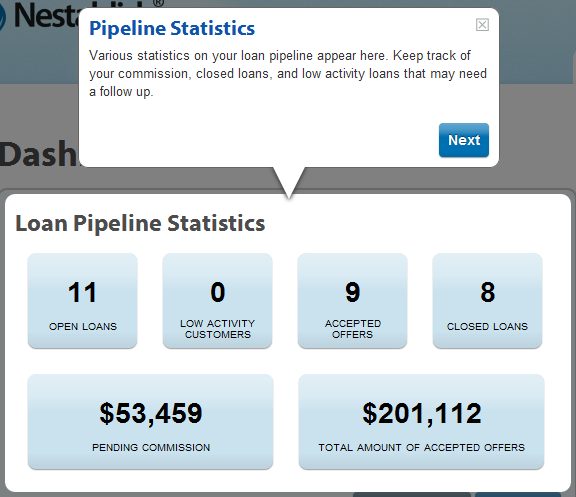This article consists of excerpts and other information from the Federal Register / Vol. 78.
Background
During the years preceding the mortgage crisis, too many mortgages were made to consumers without regard to the consumer’s ability to repay the loans. Loose underwriting practices by some creditors — including failure to verify the consumer’s income or debts and qualifying consumers for mortgages based on ‘‘teaser’’ interest rates that would cause monthly payments to jump to unaffordable levels after the first few years — contributed to a mortgage crisis that led to the nation’s most serious recession since the Great Depression. In response to this crisis, in 2008 the Federal Reserve Board (Board) adopted a rule under the Truth in Lending Act which prohibits creditors from making "higher-price mortgage loans" without assessing consumers' ability to repay the loans. Under the Board’s rule, a creditor is presumed to have complied with the ability-to-repay requirements if the creditor follows certain specified underwriting practices. This rule has been in effect since October 2009.
In the 2010 Dodd-Frank Wall Street Reform and Consumer Protection Act, Congress required that for residential mortgages, creditors must make a reasonable and good faith determination based on verified and documented information that the consumer has a reasonable ability to repay the loan according to its terms. Congress also established a presumption of compliance for a certain category of mortgages, called "qualified mortgages." These provisions are similar, but not identical to, the Board’s 2008 rule and cover the entire mortgage market rather than simply higher-priced mortgages. The Board proposed a rule to implement the new statutory requirements before authority passed to the Consumer Financial Protection Bureau (Bureau) to finalize the rule.
Summary of the Final Rule -- The rule is effective January 10, 2014.
The Bureau is amending Regulation Z, which implements the Truth in Lending Act (TILA). Regulation Z currently prohibits a creditor from making a higher-priced mortgage loan without regard to the consumer’s ability to repay the loan. The final rule implements sections 1411 and 1412 of the Dodd-Frank Wall Street Reform and Consumer Protection Act (Dodd-Frank Act), which generally require creditors to make and document a reasonable, good faith determination of a consumer’s ability to repay any consumer credit transaction secured by a dwelling (excluding an open-end credit plan, timeshare plan, reverse mortgage, or temporary loan) and establishes certain protections from liability under this requirement for "qualified mortgages."
General Requirements for Qualified Mortgages
The Dodd-Frank Act sets certain product-feature prerequisites and affordability underwriting requirements for "qualified mortgages" and vests discretion in the Bureau to decide whether additional underwriting or other requirements should apply. The final rule implements the statutory criteria, which generally prohibit loans with negative amortization, interest-only payments, balloon payments, or terms exceeding 30 years from being qualified mortgages. So-called “no-doc” loans where the creditor does not verify income or assets also cannot be qualified mortgages. Finally, a loan generally cannot be a qualified mortgage if the points and fees paid by the consumer exceed three percent of the total loan amount, although certain “bona fide discount points” may be excluded in some instances. The rule also provides guidance on the calculation of points and fees and thresholds for smaller loans.
Please see your Loan Officer for additional information regarding "qualified mortgages".
The final rule contains the following key elements:
Ability-to-Repay Determinations
The final rule describes certain minimum requirements for creditors making ability-to-repay determinations, but does not dictate that they follow particular underwriting models. At a minimum, creditors generally must consider eight underwriting factors:
(1) Current or reasonably expected income or assets
(2) Current employment status
(3) The monthly payment on the covered transaction
(4) The monthly payment on any simultaneous loan
(5) The monthly payment for mortgage-related obligations
(6) Current debt obligations, alimony, and child support
(7) The monthly debt-to-income ratio or residual income
(8) Credit history.
Creditors must generally use reasonably reliable third-party records to verify the information they use to evaluate the factors.
The rule provides guidance as to the application of these factors under the statute. For example, monthly payments must generally be calculated by assuming that the loan is repaid in substantially equal monthly payments during its term. For adjustable-rate mortgages, the monthly payment must be calculated using the fully indexed rate or an introductory rate, whichever is higher. Special payment calculation rules apply for loans with balloon payments, interest-only payments, or negative amortization.
Presumption for Qualified Mortgages
The Dodd-Frank Act provides that "qualified mortgages" are entitled to a presumption that the creditor making the loan satisfied the ability-to-repay requirements. However, the Act did not specify whether the presumption of compliance is conclusive (i.e., creates a safe harbor) or is rebuttable. The final rule provides a safe harbor for loans that satisfy the definition of a qualified mortgage and are not "higher-priced," as generally defined by the Board’s 2008 rule. The final rule provides a rebuttable presumption for higher-priced mortgage loans, as described further below. The line the Bureau is drawing is one that has long been recognized as a rule of thumb to separate prime loans from subprime loans. Indeed, under the existing regulations that were adopted by the Board in 2008, only higher-priced mortgage loans are subject to an ability-to-repay requirement and a rebuttable presumption of compliance if creditors follow certain requirements. The new rule strengthens the requirements needed to qualify for a rebuttable presumption for subprime loans and defines with more particularity the grounds for rebutting the presumption.
Specifically, the final rule provides that consumers may show a violation with regard to a subprime qualified mortgage by showing that, at the time the loan was originated, the consumer’s income and debt obligations left insufficient residual income or assets to meet living expenses. The analysis would consider the consumer’s monthly payments on the loan, loan-related obligations, and any simultaneous loans of which the creditor was aware, as well as any recurring, material living expenses of which the creditor was aware.
Guidance accompanying the rule notes that the longer the period of time that the consumer has demonstrated actual ability to repay the loan by making timely payments, without modification or accommodation, after consummation or, for an adjustable-rate mortgage, after recast, the less likely the consumer will be able to rebut the presumption based on insufficient residual income. With respect to prime loans — which are not currently covered by the Board’s ability-to-repay rule — the final rule applies the new ability-to-repay requirements but creates a strong presumption for those prime loans that constitute qualified mortgages. Thus, if a prime loan satisfies the qualified mortgage criteria, it will be conclusively presumed that the creditor made a good faith and reasonable determination of the consumer’s ability to repay.
Encouraging Creditors to Refinance "Non-Standard Mortgages" into "Standard Mortgages"
The final rule also provides special rules to encourage creditors to refinance "non-standard mortgages" — which include various types of mortgages which can lead to payment shock that can result in default — into "standard mortgages" with fixed rates for at least five years that reduce consumers' monthly payments.
Limiting Prepayment Penalties
The final rule also implements section 1414 of the Dodd-Frank Act, which limits prepayment penalties.
Retention of Evidence of Compliance
The final rule also requires creditors to retain evidence of compliance with the rule for three years after a covered loan is consummated.


